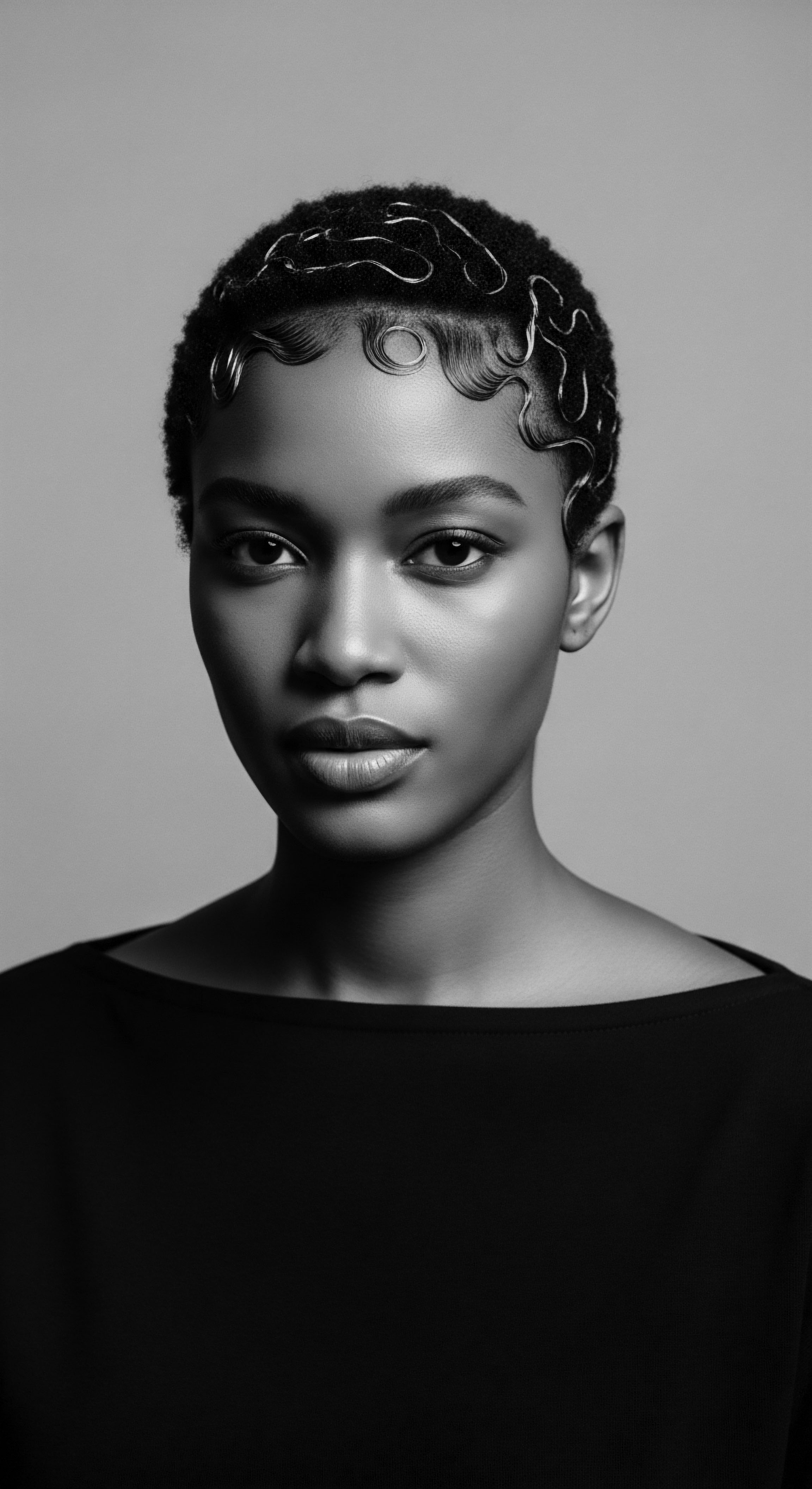
Fundamentals
The essence of a strand, in its most elemental form, begins with its Molecular Structure. This refers to the precise arrangement of atoms within the molecules that constitute hair, dictating its fundamental properties, from its resilience to its unique curl patterns. At its core, hair is primarily composed of a protein called Keratin, a fibrous substance also found in our skin and nails. The meaning of molecular structure here is its basic, underlying blueprint, the very scaffolding upon which all hair, including the diverse textures of Black and mixed-race heritage, is built.
Keratin molecules, long and helical in shape, come together to form larger structures, akin to intertwined ropes. These ropes then assemble into microfibrils, which further combine to create macrofibrils, ultimately forming the sturdy structure of an individual hair shaft. This intricate layering provides hair with its mechanical support and elasticity.
The strength and shape of hair are significantly influenced by the various chemical bonds holding these keratin structures together. Understanding these foundational elements is the first step in appreciating the profound connection between biology and the living heritage of hair.

The Core Components of Hair’s Molecular Architecture
Within each strand, the arrangement of atoms and the bonds they form determine its behavior and appearance. This internal construction is far from uniform across all hair types, particularly when considering the rich diversity of textured hair.
- Keratin Proteins ❉ These are the building blocks, long chains of amino acids that coil into alpha-helices. Think of them as the very DNA of the hair strand, carrying the genetic instructions for its formation.
- Disulfide Bonds ❉ Formed between cysteine residues within the keratin proteins, these are the strongest chemical bonds in hair. They are like the robust anchors that give hair its shape and strength. The distribution and density of these bonds play a significant role in determining curl patterns.
- Hydrogen Bonds ❉ Weaker than disulfide bonds, these connections are vital for stabilizing the alpha-helices of keratin and influence hair’s elasticity and moisture retention. They are akin to temporary ties, easily broken by water and reformed as hair dries, which explains why hair changes shape when wet.
- Salt Bonds ❉ These are the weakest of the three, formed between amino acid chains, contributing to the hair’s overall strength. They are also susceptible to changes in pH.
These molecular interactions, often unseen, hold the stories of our hair’s capabilities and its vulnerabilities, offering an explanation for why some textures coil tightly while others flow in gentle waves.
The molecular structure of hair, particularly the intricate arrangement of keratin and its bonds, forms the fundamental blueprint for every strand, revealing the biological underpinnings of hair’s diverse forms and behaviors.

Echoes from the Source ❉ Ancestral Understanding of Hair’s Foundation
Long before the advent of modern microscopy, ancestral communities possessed an intuitive understanding of hair’s intrinsic nature. Their practices, honed over generations, reflected a deep, albeit unarticulated, knowledge of its molecular needs. The emphasis on natural ingredients and gentle handling, common in traditional African hair care, speaks to an inherited wisdom that preserved the integrity of the hair’s fundamental composition.
For instance, the consistent use of rich, natural oils like shea butter and coconut oil in various African traditions was not merely for aesthetics; it was a profound act of preservation. These emollients, through their very molecular make-up, provided lubrication and protection to the hair shaft, reinforcing its external cuticle and potentially minimizing protein loss. This ancient wisdom, passed down through the tender thread of oral tradition and lived experience, recognized the hair as a living entity, deserving of careful tending.

Intermediate
Moving beyond the foundational understanding, the Molecular Structure takes on a deeper meaning when we consider its direct implications for textured hair heritage. Here, the arrangement of keratin and its various bonds is not merely a scientific curiosity; it is a profound determinant of the hair’s unique characteristics, its resilience, and its historical journey. The interpretation of molecular structure at this level acknowledges the subtle yet powerful distinctions that shape the Black and mixed-race hair experience.
Textured hair, particularly Afro-textured hair, exhibits distinct structural variations compared to other hair types. Its cross-sectional appearance is typically elliptical, often described as flattened, rather than circular. This flattened, often highly elliptical, shape contributes significantly to the hair’s curvature. Moreover, the hair follicle itself can display retro-curvature, leading to an asymmetrical S-shaped growth from the scalp.
These unique anatomical features contribute to a higher density of disulfide bonds in certain areas of the hair shaft, which in turn influences the pronounced curl patterns. This specific molecular arrangement explains why textured hair coils and kinks in such varied and beautiful ways, yet also presents certain care considerations.
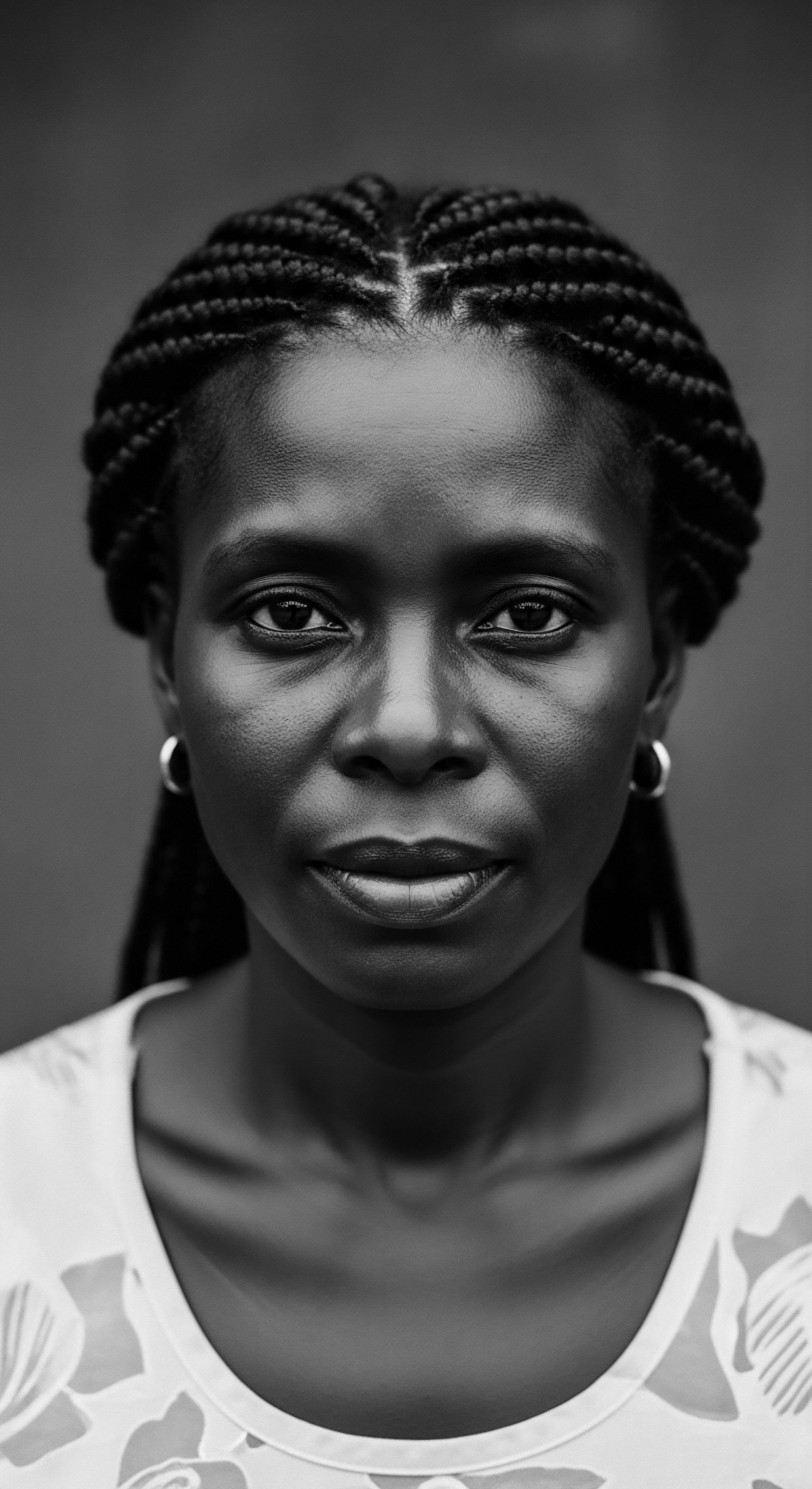
The Architecture of Curl ❉ Disulfide Bonds and Their Distribution
The distinctive curl patterns of textured hair are intrinsically linked to the distribution of disulfide bonds within the keratin structure. While straight hair tends to have an even distribution of these bonds, curly hair often displays them more concentrated on one side of the hair shaft, causing the hair to bend and coil. This uneven distribution, coupled with the elliptical cross-section, creates a hair fiber that is inherently more prone to tangling and breakage if not handled with informed care.
The implication of this molecular reality extends into historical hair care practices. Traditional methods often involved protective styles and gentle manipulation, instinctively addressing the inherent vulnerabilities of these unique structures. The braiding traditions, for example, were not just aesthetic choices; they served as a protective measure, reducing the mechanical stress on individual strands and preserving length. This historical approach demonstrates an ancestral understanding of hair’s delicate nature, a recognition of its molecular predisposition to certain forms of damage.
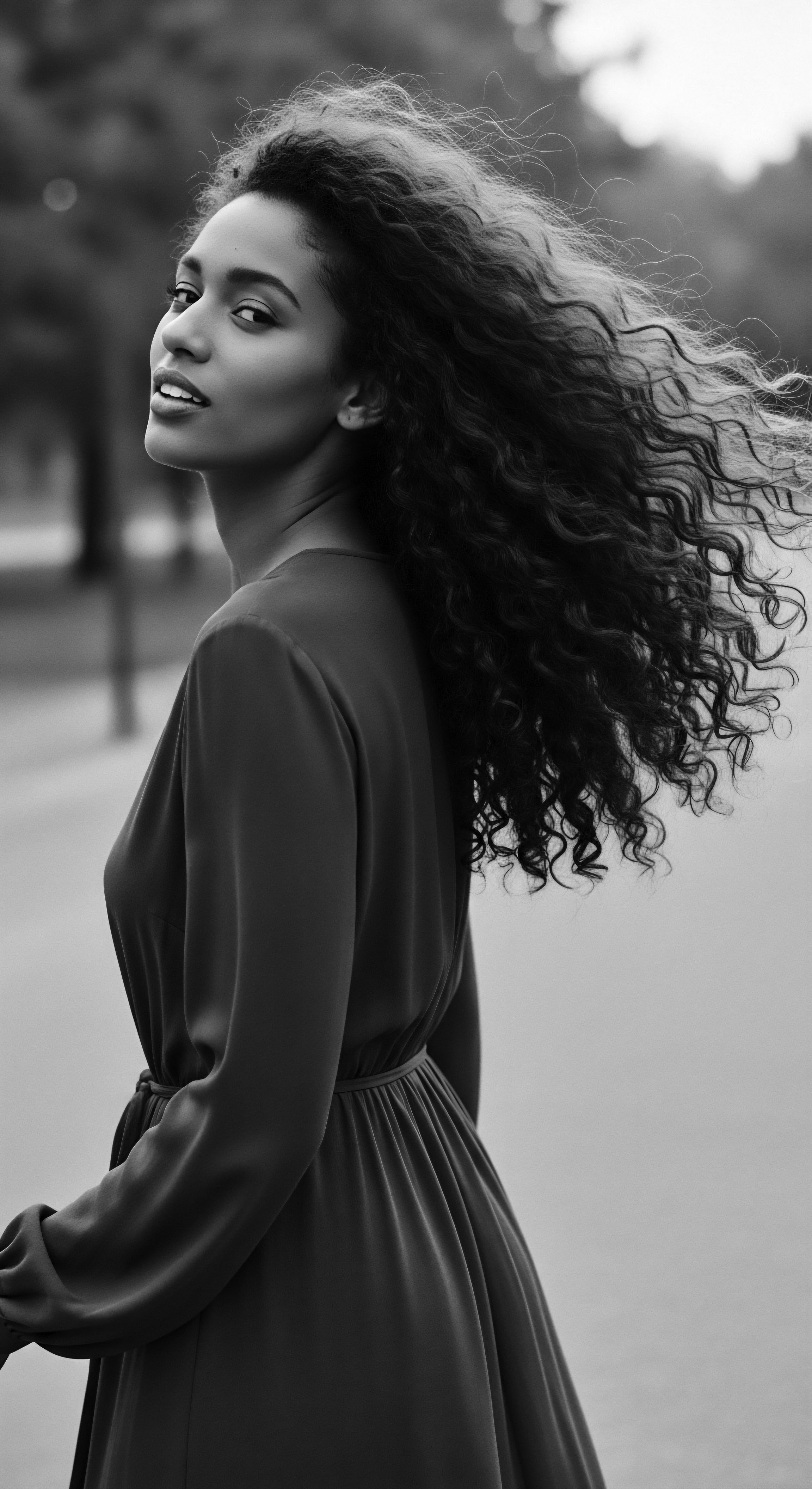
Ancestral Practices and Molecular Integrity
The care rituals of past generations were, in essence, practical applications of an unwritten science. The use of natural ingredients, often rich in fatty acids and humectants, was a direct response to the hair’s molecular needs. For instance, the traditional use of oils like coconut oil, deeply embedded in many African hair care practices, offers a compelling illustration.
A study by Rele and Mohile (2003) demonstrated that coconut oil, due to its low molecular weight and linear chain, is able to penetrate the hair shaft and reduce protein loss from both undamaged and damaged hair. This finding provides a scientific validation for an ancestral practice, revealing how communities intuitively understood the molecular benefits of their chosen remedies.
The molecular structure of textured hair, characterized by its elliptical cross-section and uneven disulfide bond distribution, underpins its unique curl patterns and inherent vulnerabilities, which ancestral care practices intuitively addressed through protective styling and natural ingredients.
| Traditional Ingredient Shea Butter (Vitellaria paradoxa) |
| Ancestral Application Used for centuries to moisturize and protect hair and scalp. |
| Molecular Relevance Rich in fatty acids that provide emollients, sealing the cuticle and reducing moisture loss, thus supporting the hair's lipid barrier. |
| Traditional Ingredient Coconut Oil (Cocos nucifera) |
| Ancestral Application Applied as a pre-wash treatment or leave-in to nourish and strengthen hair. |
| Molecular Relevance Lauric acid, a medium-chain fatty acid, penetrates the hair shaft to reduce protein loss and reinforce internal keratin structure. |
| Traditional Ingredient Chebe Powder (from Croton zambesicus) |
| Ancestral Application Traditional Chadian practice for length retention, mixed with oils and applied to braided hair. |
| Molecular Relevance Believed to coat the hair shaft, filling gaps and sealing the cuticle, thereby preventing breakage and retaining moisture within the hair's protein matrix. |
| Traditional Ingredient These ancestral practices, often rooted in readily available botanical resources, demonstrate a profound, lived understanding of hair's molecular needs for health and preservation across generations. |
The meticulous preparation of hair butters and infusions, as seen in diverse African communities, highlights a sophisticated engagement with natural resources. This is not simply about applying a substance; it is about recognizing the synergistic effects of various compounds on the hair’s protein structure and moisture balance. The deep respect for these traditional remedies underscores a heritage where hair care was an integral part of holistic well-being, deeply intertwined with identity and communal practice.
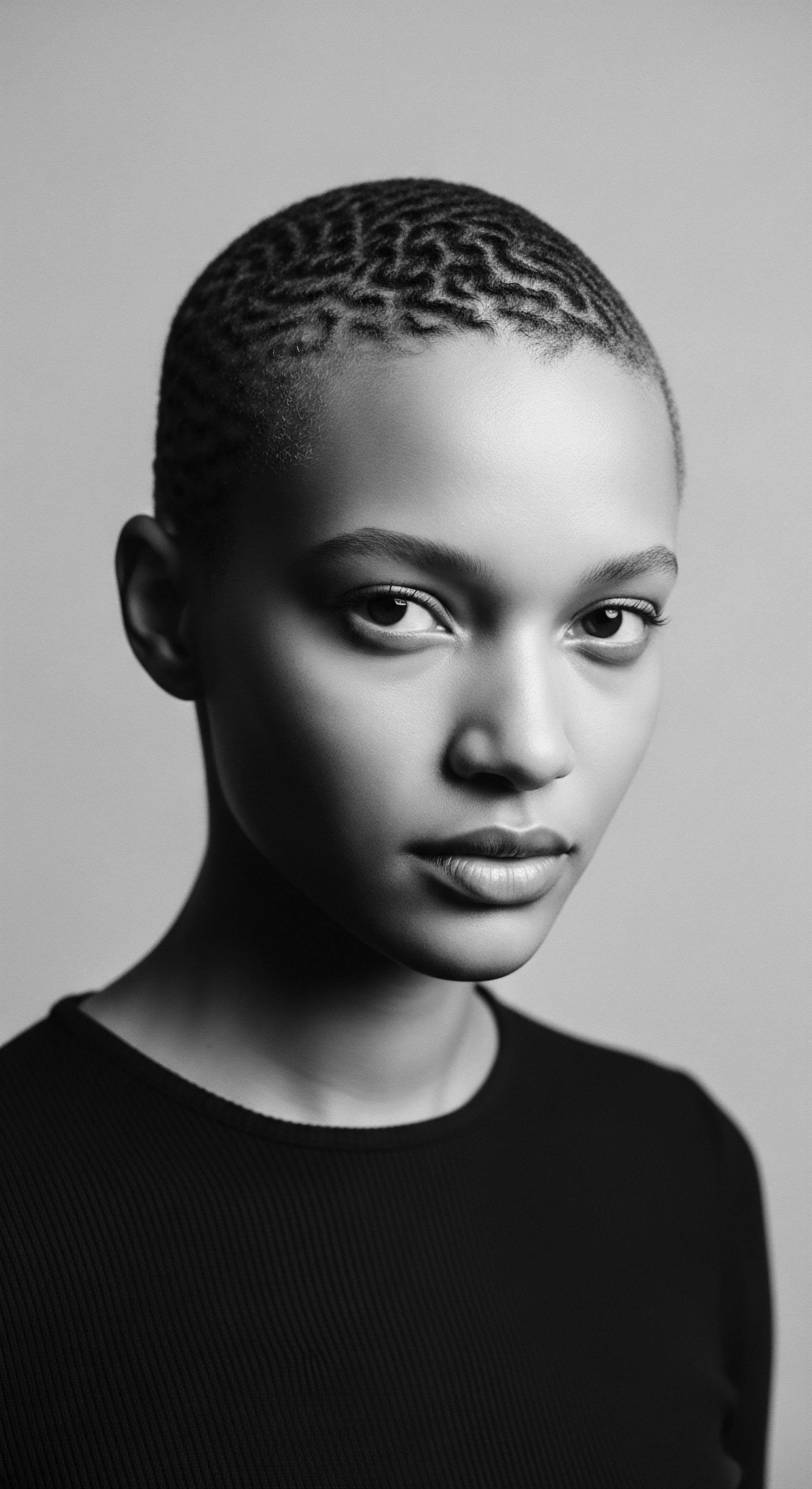
Academic
The Molecular Structure, in its academic interpretation, transcends a mere descriptive explanation to become a profound delineation of the intricate physicochemical properties that define textured hair, its historical vulnerabilities, and its enduring strength within Black and mixed-race communities. This understanding requires a rigorous examination of keratin’s polymeric architecture, the nuanced mechanics of disulfide bonding, and the biophysical implications of hair’s unique morphology. It is a specification that delves into the very substance and essence of what makes textured hair distinct, allowing for a comprehensive exploration grounded in scientific inquiry and cultural context.
The meaning of molecular structure, when applied to textured hair, speaks to a complex interplay of genetic predisposition and environmental interaction. The hair shaft, a filamentous appendage, is predominantly composed of Alpha-Keratins, which are helical proteins rich in cysteine residues. These cysteine residues form crucial Disulfide Bonds, the strongest chemical links within the hair fiber, responsible for its mechanical properties and shape retention.
The unique coiling and kinking of textured hair stem from an uneven distribution of these disulfide bonds across the hair shaft, leading to differential stress and strain along its elliptical cross-section. This flattened, often ribbon-like, cross-sectional shape, combined with the asymmetrical S-shaped curvature of the hair follicle, results in points of inherent mechanical weakness and increased susceptibility to breakage.
Beyond the primary protein structure, the cuticle, the outermost protective layer of the hair, consists of overlapping, scale-like cells primarily cross-linked by cysteines. In textured hair, the elevated curvature can cause the cuticle scales to lift more readily, creating more opportunities for moisture loss and increasing friction between strands, which contributes to dryness and tangling. This biophysical reality has historically informed, and continues to shape, the care practices within communities of color, emphasizing hydration and protective styling.
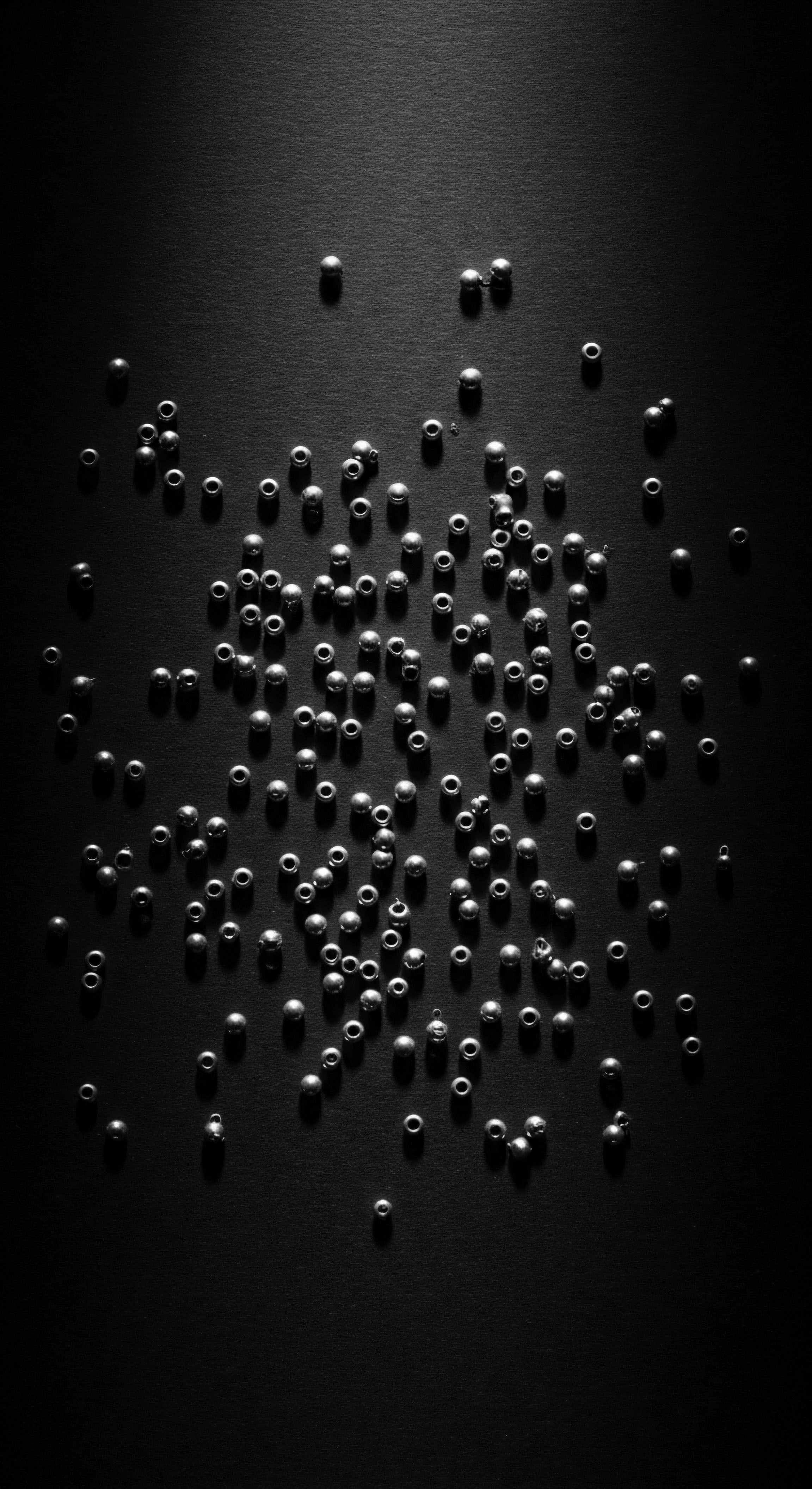
The Molecular Underpinnings of Resilience and Vulnerability
The very structure that gives textured hair its extraordinary aesthetic diversity also presents specific challenges. The tight coiling and elliptical shape mean that natural oils produced by the scalp struggle to travel down the hair shaft, leading to increased dryness. This dryness, coupled with the numerous points of curvature, renders textured hair more susceptible to mechanical damage from styling and manipulation.
Consider the historical context of hair care for enslaved Africans. Stripped of traditional tools and ingredients, they were forced to innovate, using what little was available, such as bacon grease or butter, to attempt to moisturize and manage their hair. This desperate resourcefulness speaks to an inherent understanding of hair’s need for lubrication and protection, even if the precise molecular mechanisms were unknown.
The constant struggle against dryness and breakage, exacerbated by harsh conditions, highlights the profound impact of molecular structure on lived experience. The ability of hair to endure, despite these challenges, is a testament to its inherent resilience, a quality often mirrored in the communities it adorns.
The cultural significance of hair for Black women, as explored by scholars like Ingrid Banks (2000), underscores how hair choices are inextricably linked to identity, community, and cultural authenticity. The very molecular distinctions of textured hair became a canvas for expression and resistance, even in the face of systemic attempts to devalue it. The “nappy” or “kinky” texture, once a symbol of inferiority imposed by enslavers, became a powerful emblem of pride and defiance during movements for liberation. This transformation of meaning is deeply connected to the physical reality of the hair’s structure, which could not be entirely erased or conformed.

Case Study ❉ The Enduring Wisdom of Chebe Powder and Molecular Protection
A compelling example that illuminates the molecular structure’s connection to textured hair heritage and ancestral practices is the use of Chebe Powder by the Bassara (or Baggara Arab) women of Chad. This practice, passed down through generations, involves applying a mixture of Chebe powder, natural oils, and sometimes animal fats to the hair, which is then braided. The primary goal is length retention, and the women are renowned for their remarkably long, strong hair.
While modern scientific research on Chebe powder’s direct molecular action is still emerging, the traditional understanding and observed results offer profound insights. The powder is believed to coat the hair shaft, creating a protective barrier that reduces friction and prevents moisture loss. From a molecular perspective, this coating likely reinforces the hair’s cuticle layer, preventing the lifting of scales that can lead to breakage and protein loss, particularly in highly coiled textures. The traditional application method—mixing it with oils and braiding—further supports this protective mechanism, as the oils provide lubrication and the braids minimize manipulation, thereby reducing mechanical stress on the hair’s delicate disulfide bonds and cuticle structure.
This practice exemplifies how ancestral wisdom, without the benefit of electron microscopes or chemical analyses, developed highly effective methods that intuitively addressed the molecular vulnerabilities of textured hair. The persistent use of Chebe powder, despite its labor-intensive application, speaks to its perceived efficacy and its deep cultural resonance as a practice for hair preservation and expression of beauty within the Bassara community. It represents a living library of knowledge, where empirical observation and generational experience crafted solutions that aligned with the hair’s inherent molecular needs.
The academic interpretation of molecular structure for textured hair highlights the biophysical realities of its unique morphology, including elliptical cross-sections and uneven disulfide bond distribution, which dictate its vulnerabilities and have profoundly shaped ancestral care practices aimed at preservation and resilience.
The scientific elucidation of hair’s molecular structure provides a modern lexicon for what ancestral communities understood through observation and practice. The traditional methods of cleansing, conditioning, and styling were, in essence, optimizing the molecular environment of the hair. Hot oil treatments, a practice found in many African diasporic communities, aid in the penetration of oils into the hair shaft, reinforcing its internal structure and sealing the cuticle. This demonstrates a sophisticated, albeit informal, understanding of how to enhance the hair’s molecular integrity.
The ongoing natural hair movement, a contemporary expression of heritage, further validates this academic exploration. It represents a conscious decision to align hair care practices with the hair’s natural molecular configuration, moving away from chemical alterations that disrupt disulfide bonds and permanently alter the hair’s inherent shape. This shift reflects a deeper appreciation for the hair’s biological blueprint and a reconnection with ancestral modes of care that prioritize its natural state. The meaning here is not just scientific, but also a reclamation of identity and a celebration of the hair’s authentic self, deeply rooted in its molecular genesis.

Reflection on the Heritage of Molecular Structure
As we journey through the intricate layers of the molecular structure, from the elemental composition to its profound implications for textured hair, a resonant truth emerges ❉ hair is a living archive, holding stories of ancestral wisdom, resilience, and identity. The understanding of a strand’s molecular architecture is not merely an academic pursuit; it is a spiritual reconnection to the “Soul of a Strand” ethos, where science and heritage intertwine in a beautiful, unbroken lineage.
The curls, coils, and kinks of textured hair, so often misunderstood or devalued in dominant beauty narratives, are revealed through their molecular makeup to be expressions of remarkable biological complexity and adaptation. Each disulfide bond, every elliptical curve, tells a story of survival, of a people who, despite immense challenges, preserved their traditions and found profound meaning in the tending of their hair. The very structure of textured hair became a silent language, communicating status, identity, and even coded messages of escape during the darkest chapters of history. This enduring significance transforms the scientific definition into a deeply personal and collective narrative.
The echoes from the source, those ancient practices of care and community, gain new clarity when viewed through the lens of molecular understanding. The rhythmic application of oils, the patient braiding, the communal gatherings around hair — these were not just rituals; they were acts of profound care, intuitively addressing the hair’s need for moisture, protection, and structural integrity. They were acts of love, passed from hand to hand, generation to generation, ensuring the vitality of a heritage that defied erasure. This tender thread of tradition continues to guide us, affirming that the wisdom of our ancestors often aligns with the most advanced scientific insights.
Looking towards the future, the unbound helix of textured hair stands as a symbol of liberation and self-acceptance. Understanding its molecular structure empowers us to care for it with informed reverence, to celebrate its unique capabilities, and to continue the legacy of innovation rooted in ancestral wisdom. It is a call to recognize that true beauty resides not in conformity, but in the magnificent diversity that the molecular world so richly bestows upon us. The hair, in its myriad forms, remains a powerful voice, shaping identities and inspiring futures, always connected to its deep, enduring heritage.

References
- Banks, I. (2000). Hair matters ❉ Beauty, power, and Black women’s consciousness. New York University Press.
- Byrd, A. D. & Tharps, L. D. (2001). Hair story ❉ Untangling the roots of Black hair in America. St. Martin’s Press.
- Jacobs-Huey, L. (2006). From the kitchen to the salon ❉ Language and learning in an African American community. Yale University Press.
- Rele, A. S. & Mohile, R. B. (2003). Effect of mineral oil, sunflower oil, and coconut oil on prevention of hair damage. Journal of Cosmetic Science, 54 (2), 175-192.
- Rooks, N. M. (1996). Hair raising ❉ Beauty, culture, and African American women. Rutgers University Press.
- Sarkar, R. Podder, I. Gokhale, N. Jagadeesan, S. & Garg, V. K. (2017). Use of vegetable oils in dermatology ❉ An overview. International Journal of Dermatology, 56 (10), 1080-1086.
- Tate, S. (2007). Black beauty ❉ Aesthetics, culture, and identity. Ashgate Publishing, Ltd.
- Thompson, S. (2009). Black women and identity ❉ What’s hair got to do with it? University of Michigan.
